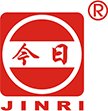Are O-Ring or D-Ring Binders Better?
Choosing the right binder may seem like a small decision, but it can have a big impact on how efficiently you organize, store, and access your documents. Two of the most common binder ring styles are O-Ring Binders and D-ring binders. Each type has its own design, capacity, and use cases, which makes them better suited for different needs. This article explains the differences and helps you decide which is best for your situation.
What Is an O-Ring Binder?
O-ring binders are the traditional style that most people recognize. They have circular rings positioned along the spine or back cover. The shape of the rings is completely round, which makes them simple and affordable. O-ring binders are widely used in schools, offices, and for personal organization.
Advantages of O-Ring Binders
Cost-effective: They are usually cheaper to manufacture and purchase.
Compact size: Perfect for small projects or reports with fewer pages.
User-friendly: Easy to open, close, and flip through pages without much resistance.
Limitations of O-Ring Binders
Lower capacity: Because the pages curve more tightly around the rings, they hold fewer sheets compared to a D-ring binder of the same spine size.
Uneven wear: Pages may curl or tear more easily near the punched holes due to the circular ring design.
What Is a D-Ring Binder?
D-ring binders feature a straight edge on one side of the ring and a curved edge on the other, forming a “D” shape. The flat edge allows the pages to lie more evenly, reducing stress on the holes and keeping documents neater. Many D-ring binders have their rings attached to the back cover instead of the spine, making them easier to handle.
Advantages of D-Ring Binders
Greater capacity: A D-ring binder of the same spine width can hold up to 20–25% more pages than an O-ring binder.
Neater alignment: Pages lie flat, making it easier to browse through large stacks of paper.
Durability: Less stress on punched holes extends the lifespan of your documents.
Professional appearance: Commonly used in offices and presentations where organization and aesthetics matter.
Limitations of D-Ring Binders
Slightly higher cost: They are usually more expensive due to their more complex construction.
Bulkier size: The design makes them a bit larger, which may not be ideal for light or portable use.
Which Binder Is Better?
The answer depends on your specific needs:
For light use or short documents: An O-ring binder is often the better choice. It is compact, inexpensive, and easy to manage.
For heavy use or large collections: A D-ring binder is superior. It holds more pages, keeps them neat, and reduces damage over time.
For professional settings: D-ring binders often look more polished, making them a popular choice for presentations, office manuals, and training materials.
Practical Applications
Students: O-ring binders are ideal for single subjects or small projects where portability matters.
Businesses: D-ring binders are the go-to for storing large sets of records, contracts, or training manuals.
Home organization: Both work well, but D-ring binders are more effective if you keep long-term records like taxes or financial documents.
Final Thoughts
When deciding between O-ring and D-ring binders, think about how many pages you need to store, how often you will access the documents, and whether presentation quality is important. For small, casual uses, O-ring binders are sufficient. For heavy-duty, professional, or long-term storage, D-ring binders provide better capacity, organization, and protection.



